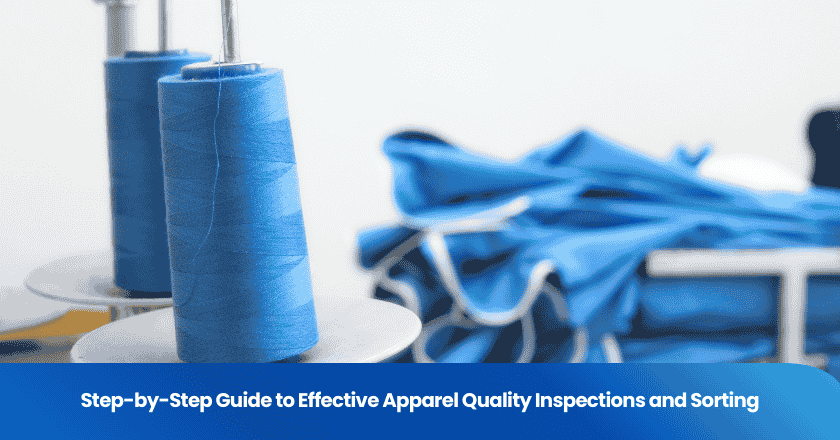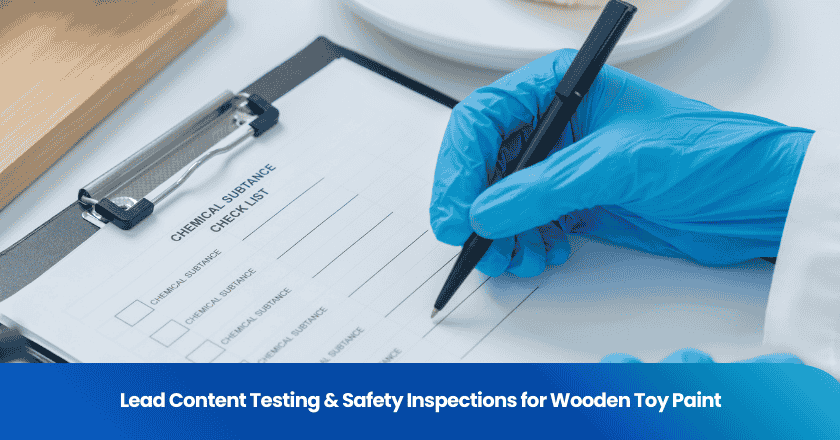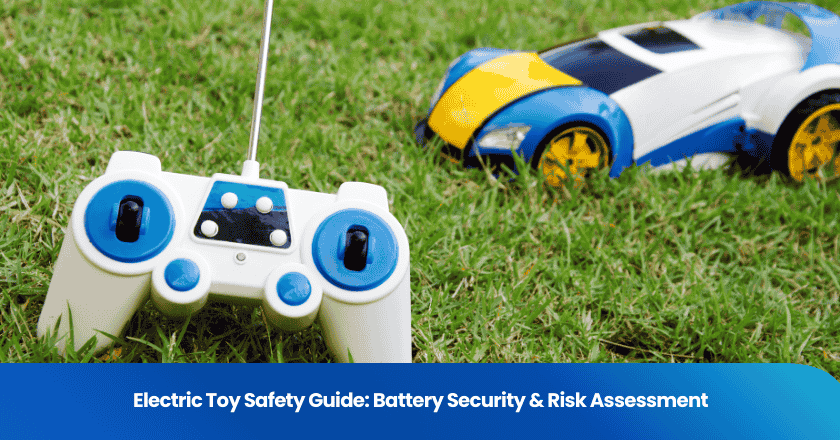
You achieve effective apparel quality inspections & sorting by following a structured process and focusing on key details. Preparation matters, including proper storage and staff training. Inspection criteria must address sizing, workmanship, and compliance. Sorting procedures require attention to defect type and severity. You often face challenges such as stock discrepancies, poor replenishment, and multiple sales channels, as shown below:
| Challenge | Description |
|---|---|
| Training Requirements | Complex product identification needs well-trained staff. |
| Turnover and Absenteeism | Frequent hiring and attrition reduce consistency. |
| Ergonomics and Safety | Poorly designed workstations can cause fatigue and injury. |
- Incorrect sizing from poor stitching
- Workmanship defects due to lack of training
- Chaotic goods storage causing non-compliance
Tip: Consistent procedures and ongoing staff development help you overcome these obstacles.
Key Takeaways
- Follow a structured inspection process to ensure every garment meets quality standards.
- Invest in staff training to reduce errors and improve inspection accuracy.
- Use AQL sampling to efficiently assess product quality without checking every item.
- Maintain proper storage conditions to prevent defects and preserve fabric quality.
- Document inspection results to track defects and support continuous improvement.
Importance
Product Quality
You maintain high product quality by following strict inspection procedures. Quality inspections ensure that every garment meets predefined standards. You check for material durability and production uniformity. This process minimizes flaws and helps you deliver superior products to customers.
- You uphold product superiority and enhance customer satisfaction.
- You minimize defects and reduce the chances of returns or negative feedback.
- You reinforce consumer trust and loyalty.
| Aspect of Quality Control | Impact on Product Quality |
|---|---|
| Raw Material Testing | Ensures durability and prevents damage during use |
| Color Fastness Testing | Guarantees color durability and prevents fading |
| Texture Inspection | Ensures materials meet design requirements |
AI-powered systems provide real-time quality monitoring, allowing you to detect and correct defects immediately. This proactive approach prevents defective products from reaching the market and increases overall efficiency.
Systematic inspections identify defects before garments reach customers. You check for adherence to size charts and fit standards, addressing sizing issues early. You also catch common problems like stitching errors and fabric flaws, which improves overall production quality.
Brand Reputation
Your commitment to quality directly influences your reputation in the market. Statistical analysis shows a significant difference in perceived quality between two apparel samples, with higher-rated samples attracting more buyers. Consumers justify higher prices based on perceived benefits, and superior ratings in quality and value increase purchase intent.
- Poor ratings signal inconsistent quality and lead to a drop in consumer trust.
- Brands with low ratings often need to offer discounts or refunds to regain customer satisfaction.
- A single bad review can lower purchase intent by nearly 42%.
- A 20% drop in sales can occur if a product rating falls below 4 stars.
You avoid these financial impacts by maintaining consistent quality standards. Negative reviews lead to higher return rates and diminished customer trust, which affects revenue and market share.
Compliance
You must follow compliance standards to succeed in international trade. The most common standards include:
- ISO 9001: This standard ensures products meet customer needs and emphasizes process control.
- ISO 14001: This standard focuses on reducing pollution and waste during production, supporting sustainable development.
| Consequence Type | Description |
|---|---|
| Regulatory Penalties | The FTC can impose significant fines for each violation, leading to substantial financial risks. |
| Financial Risks | Non-compliance can result in financial penalties that accumulate with multiple violations. |
| Reputational Damage | Violations can lead to consumer complaints and negative publicity, harming brand image. |
You protect your business from regulatory penalties and reputational damage by adhering to these standards. Compliance ensures you meet market requirements and maintain your position in global trade.
Preparation for Apparel Inspection
Storage Conditions
You set the foundation for a successful apparel inspection by confirming proper storage conditions. Well-organized storage helps you access garments quickly and manage inventory efficiently. Climate control is essential. You use HVAC systems and dehumidifiers to maintain the right temperature and humidity, which preserves fabric quality. Racking systems prevent damage from overloaded or corroded beams. Poor storage can lead to defects such as crease marks, shading, and pilling, all of which lower the overall quality of your apparel.
| Storage Condition | Description |
|---|---|
| Organization | Proper organization of apparel to facilitate easy access and inventory management. |
| Climate Control | Use of HVAC and dehumidifiers to maintain optimal humidity and temperature, preserving fabric quality. |
| Racking Systems | Implementation of racking inspections to prevent damage from overloaded or corroded beams. |
| Defect Type | Description | Impact on Quality |
|---|---|---|
| Crease marks | Permanent fold lines from damp fabric handling or storage. | Resists ironing, leading to a less polished appearance. |
| Shading | Variations in fabric tone, especially noticeable in solid colors. | Affects visual appeal, making garments look inconsistent. |
| Pilling | Loose fibers forming balls on the fabric surface. | Indicates fiber weakness, leading to complaints about durability. |
Tip: Always inspect storage areas before beginning your quality checks to prevent these issues.
Tools & Equipment
You need the right tools and equipment to perform accurate apparel inspections. Essential items include:
- Measuring tape
- Dial calipers
- Digital camera
- Defect stickers
- Pantone color swatch
- Barcode scanner
- Metal detector
A garment quality control checklist ensures you have all necessary instruments and clarifies who provides them. Recent advancements, such as digital quality management systems and AI-driven defect detection, help you streamline the inspection process and improve accuracy. Mobile inspection apps and cloud dashboards allow you to capture and analyze defect data in real time, supporting better quality decisions.
Staff Training
You achieve consistent inspection results by investing in staff training. Training and certification help your team maintain high standards in visual inspection. Well-trained inspectors reduce error rates and improve overall quality. You should prioritize ongoing training and keep documentation centralized for easy access. Integrating technology and automation into your inspection process further enhances efficiency and accuracy. Untrained staff often overlook defects, fail to maintain standards, or misjudge defect severity, which can compromise the quality of your products.
Note: Regular training sessions and clear documentation help you build a skilled workforce dedicated to quality.
Apparel Quality Inspections & Sorting Steps
Inspection Stages
You achieve consistent results in apparel quality inspections & sorting by following a structured inspection process. The apparel industry relies on a multi-stage approach to maintain high standards and meet requirements at every step. Each stage addresses specific requirements and ensures that product specifications align with customer expectations.
| Stage Number | Stage Name | Description |
|---|---|---|
| 1 | Pre-production stage | Review of design and material selection to ensure product specifications are met. |
| 2 | Production planning and preparation | Establishing quality standards and operating procedures to guide the production process. |
| 3 | Quality control during production | Implementing online inspection and real-time monitoring to detect defects early. |
| 4 | Post-production quality control | Conducting Final Random Inspection (FRI) to assess the quality of finished products. |
You begin with a pre-production review, checking design and material selection against product specifications. During production planning, you set up a quality control checklist and define requirements for each step. Real-time defect detection and in-process quality control help you identify defects early, improving efficiency and reducing waste. Post-production quality control inspection ensures that only high-quality garments reach your customers.
Tip: Use a detailed quality control checklist at every stage to track requirements and maintain control over the inspection process.
AQL Sampling
You use Acceptable Quality Level (AQL) sampling to determine if a batch of apparel meets requirements. Pulling random samples from each lot allows you to assess the overall quality without inspecting every item. The apparel industry typically uses AQL 2.5 as the standard for product inspection, but requirements may vary based on product specifications and defect severity.
| AQL Level | Description |
|---|---|
| AQL 1.0-1.5 | Very strict, common for luxury or medical-grade textiles |
| AQL 2.5 | Industry standard for apparel |
| AQL 4.0+ | More lenient, often used for low-cost items |
You select the appropriate AQL level based on the requirements of your product category. For example, you use AQL 1.0-1.5 for high-end or medical apparel, while AQL 2.5 suits most standard garments. Pulling random samples and applying AQL standards help you control defects and maintain efficiency in your inspection process.
| Defect Category | AQL Level | Description |
|---|---|---|
| Minor Defects | 4.0 | Cosmetic issues that don’t affect performance, such as loose threads or fabric inconsistencies. |
| Major Defects | 2.5 | Issues that affect usability, like broken zippers or uneven seams. |
| Critical Defects | 0.0 | Safety hazards or defects that make garments unusable. |
You must document the number of defects found in each sample and compare them to the requirements in your quality control checklist. If defects exceed the allowed level, you reject the batch and take corrective action.
Packaging & Labeling
You ensure that packaging and labeling meet all requirements before shipping apparel. Packaging must protect garments from damage and comply with local laws. You check weight, dimensions, material, carton size, and strength as part of your quality control checklist. Labeling requirements include clear barcodes, fiber content, country of origin, washing instructions, and manufacturer identification.
- Packaging: Protects products, meets legal requirements, and prevents damage during shipping.
- Labeling: Establishes identity, provides care instructions, and ensures compliance with regulations.
Missing or illegible barcodes cause shipping delays and fines. Customs inspectors require clear information on packaging to verify compliance. You must check each carton for:
1. Purchaser’s name
2. Purchase order (PO) number
3. Number of items and descriptions
4. Carton dimensions and weight
5. Number of cartons within each set
6. Warning labels and storage instructions
7. Barcodes
Note: Always include packaging and labeling checks in your quality control checklist to avoid costly errors and meet all requirements.
Dimensions & Weight
You verify apparel dimensions and weight to ensure they match product specifications and meet requirements. Use measuring tape and dial calipers to check garment length, width, and sleeve size. Weigh each sample to confirm it falls within the acceptable range for its category.
| Measurement Type | Range/Value |
|---|---|
| Fabric Weight (GSM) | T-shirt: 120–180 GSM |
| Denim: >300 GSM | |
| Acceptable Quality Level | Major defects: 2.5% |
| Minor defects: 4% |
Major manufacturers often reject 5–10% of fabric rolls during initial inspections due to visible defects. You must compare all measurements to the requirements in your quality control checklist. If you find deviations, record them and take corrective action. This step ensures that all apparel meets product specifications and customer expectations.
Sorting Procedures
You sort apparel by defect type and severity to maintain quality and efficiency. The apparel industry uses several inspection methods to identify and classify defects. In-process quality control and real-time defect detection help you catch issues early. Visual inspection ensures that garments meet design specifications and are free from visible defects. Functionality testing checks zippers, buttons, and other features for proper operation.
| Inspection Method | Description |
|---|---|
| In-Process Quality Control | Continuous checks during garment production to catch issues early. |
| Visual Inspection | Regular checks for visible defects and ensuring measurements meet design specifications. |
| Functionality Testing | Testing features like zippers and buttons to ensure they work properly. |
| AQL Specifications | Using Acceptable Quality Level standards to determine allowable defects before batch rejection. |
| Common Defect Types | Identification of fabric, construction, print, and sizing defects to maintain quality. |
You identify common defect types such as color shading, dye streaks, holes, misprints, crease marks, yarn contamination, uneven texture, chemical stains, and skewing. You use your quality control checklist to classify each defect and determine if it is minor, major, or critical. Automated inspection systems and ai-powered quality control improve defect detection and sorting accuracy.
Tip: Use ai-powered quality control and real-time defect detection to increase efficiency and reduce human error in sorting procedures.
You must document all findings and update your quality control checklist regularly. This approach ensures that you meet all requirements, deliver high-quality garments, and maintain control over the entire manufacturing process.
Documentation & Actions
Recording Results
You must document every apparel inspection result to maintain traceability and support continuous improvement. Use quality control checklists, product specifications, and standard operating procedures to record findings. These tools help you evaluate garments uniformly and ensure compliance with requirements. You should gather all necessary documentation, including engineering drawings and material certifications, before starting the inspection. Create an inspection plan that identifies features to check and complete standardized forms for each batch. During the inspection, measure features, record results, and note any defects. Select technologies like barcode scanning or RFID to label and track products throughout the process.
| Method | Description |
|---|---|
| Quality Control Checklists | Specify criteria for inspections, ensuring uniform evaluation across the supply chain. |
| Product Specifications | Detail product requirements to guide inspections and ensure compliance. |
| Standard Operating Procedures | Outline steps for conducting inspections and recording results. |
Tip: Consistent documentation supports traceability and helps you identify recurring defects quickly.
Reporting
You need to communicate inspection findings to management and production teams efficiently. Real-time data collection enables immediate action on defects, improving overall quality and reducing waste. Digital defect logging allows inspectors to record issues instantly, minimizing errors and enhancing documentation. Automated reports and instant alerts notify teams of critical defects, ensuring prompt corrective actions. Centralized data supports seamless collaboration among production managers, quality teams, and suppliers. Data analytics and performance tracking help you monitor recurring defects and optimize processes for higher quality standards.
| Method | Benefits |
|---|---|
| Real-time data collection | Enables immediate action on defects, improving efficiency and reducing waste. |
| Digital defect logging | Allows inspectors to log defects instantly, enhancing documentation and reducing errors. |
| Instant alerts and automated reports | Notifies teams of critical defects immediately, ensuring prompt corrective actions. |
| Seamless team collaboration | Centralizes data for better communication among production managers, quality teams, and suppliers. |
| Data analytics and performance tracking | Helps track recurring issues and optimize processes, enforcing higher quality standards. |
Note: Clear reporting ensures that everyone involved understands the current quality status and can respond to defects quickly.
Corrective Measures
You must implement corrective and preventive actions after identifying defects during inspection. Start by analyzing inspection data to find patterns and root causes. Use data analytics to guide proactive measures. Retrain employees to improve their understanding of quality standards. Integrate quality checks into production systems to streamline processes and reduce inspection time. Revise sewing methods, upgrade machinery, and improve inspection checkpoints to catch defects early. Take corrective action to eliminate the root cause and prevent recurrence. Preventive action helps you foresee and eliminate potential issues before they arise.
| Corrective Measure | Description |
|---|---|
| Data Analytics | Analyze inspection data to identify patterns and guide proactive measures. |
| Employee Training | Ensure the inspection team is skilled and knowledgeable about apparel quality standards. |
| Integrated Systems | Incorporate quality checks into production systems to streamline processes and reduce inspection time. |
You can also benefit from third-party inspections. Independent institutions provide impartial evaluations, helping you identify quality issues that internal teams may miss. This objectivity ensures products meet established standards and enhances consumer trust. Third-party quality control gives you a clearer understanding of your product quality status and helps you remain competitive.
Tip: Use third-party inspections for unbiased quality assessment and to strengthen your overall quality management system.
You achieve reliable apparel quality inspections by following systematic procedures and maintaining clear standards. Consistency in your inspections builds trust and strengthens customer loyalty. Industry experts recommend these best practices:
- Implement a structured quality control process.
- Establish clear standards for every product aspect.
- Verify each step with operator and supervisor sign-offs.
- Encourage open communication when discrepancies arise.
You improve long-term outcomes by investing in ongoing training and collaborating with experienced quality assurance teams. Building a quality-focused culture and refining inspection protocols help you maintain high standards and drive continuous improvement.
FAQ
What are the most common defects found during apparel inspections?
You often find defects such as incorrect stitching, color shading, and sizing errors. The apparel industry also faces issues with fabric pilling and broken zippers. These problems can occur at any stage of production and affect the final quality of apparel.
How does AQL sampling improve apparel quality control?
You use AQL sampling to assess apparel batches without checking every item. This method helps the apparel industry maintain efficiency and catch defects early in production. You set clear standards for acceptable quality levels, which ensures consistent results for every apparel shipment.
Why is staff training important in apparel inspections?
You need trained staff to identify defects and maintain high standards in the apparel industry. Proper training reduces errors during production and inspection. You build a skilled team that understands apparel specifications and can spot issues before they reach customers.
What role does documentation play in apparel quality management?
You record inspection results to track defects and improve future production. Documentation helps you analyze trends in the apparel industry and supports compliance. You use checklists and reports to ensure every apparel item meets requirements before shipment.
How do you sort apparel by defect type and severity?
You classify apparel defects as minor, major, or critical. The apparel industry uses visual inspection and real-time detection during production. You separate apparel based on defect severity, which helps you decide whether to repair, rework, or reject items.
Tip: Consistent sorting procedures help you maintain high standards in apparel production and reduce waste.
Grow your business with TradeAider Service
Click the button below to directly enter the TradeAider Service System. The simple steps from booking and payment to receiving reports are easy to operate.




